Hi GPODers!
As warmer weather starts creeping in and earth springs back to life, more wildlife activity begins to flourish. However, in some gardens the activity never really stops. For gardeners like Julianne Labreche, a Master Gardener in Ottawa, Ontario, their landscapes are a haven for all kinds of wildlife and beneficial insects in every season. We’ve seen Juliane’s stunning and sustainable gardens before, getting a tour of her front yard pollinator plantings in summer of 2022 (check that submission out here: Gardening for Birds, Bees, Butterflies and Beauty.). Today she returns for a look a her backyard garden during winter, which provides essential shelter and food sources for local bird populations (and the passing squirrel).
Hello from snowy Ottawa, Ontario, Canada. We were hit by a bad winter’s storm over the weekend and the ploughs have been busy. My husband and I spent yesterday morning shoveling snow from the back deck, wading knee-deep in snow as we cleared a path to the bird feeder. It was worth it because the backyard birds add so much interest to our urban garden, especially in winter.
In my backyard, there are many living trees and shrubs to attract birds all seasons of the year, including native trees such as dogwood, viburnum and cedar. However, I think my favorite tree to support the backyard birds is a dead one, called a snag.
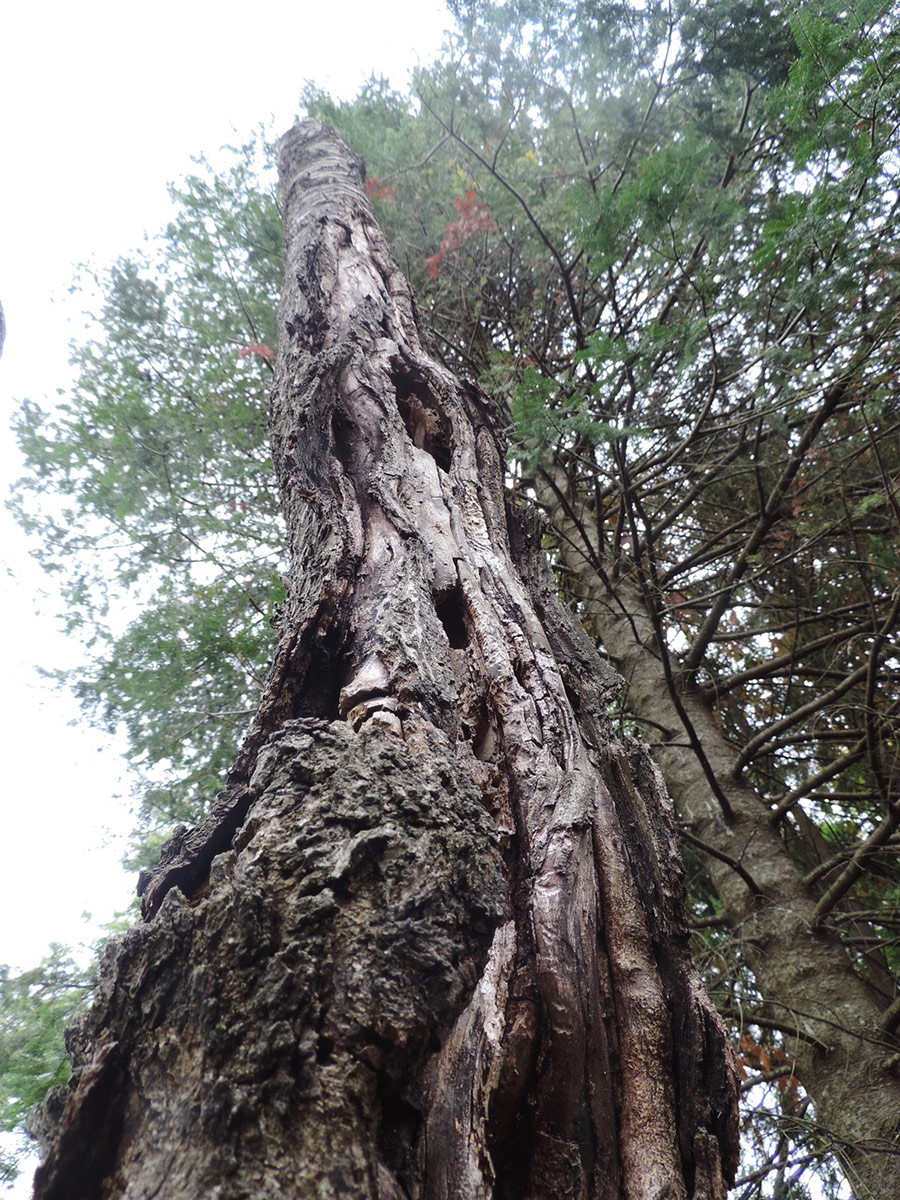 Over a decade ago, it was a beautiful cherry tree until it succumbed to a black knot (Apiosporina morbosa), a black, warty looking gall that is spread by spores that travel in wind currents. Apparently, cherry trees are prone to it. When the arborist came to remove it, I asked if we could turn it into a snag, or a standing dead tree. In nature, snags are sometimes called a ‘wildlife tree’ because they are important to the survival of many species of birds and other animals. My snag, which posed no danger to the house, was cut at about 25 feet. Now it stands for wildlife, visited year-round, including during the cold winter months.
Over a decade ago, it was a beautiful cherry tree until it succumbed to a black knot (Apiosporina morbosa), a black, warty looking gall that is spread by spores that travel in wind currents. Apparently, cherry trees are prone to it. When the arborist came to remove it, I asked if we could turn it into a snag, or a standing dead tree. In nature, snags are sometimes called a ‘wildlife tree’ because they are important to the survival of many species of birds and other animals. My snag, which posed no danger to the house, was cut at about 25 feet. Now it stands for wildlife, visited year-round, including during the cold winter months.
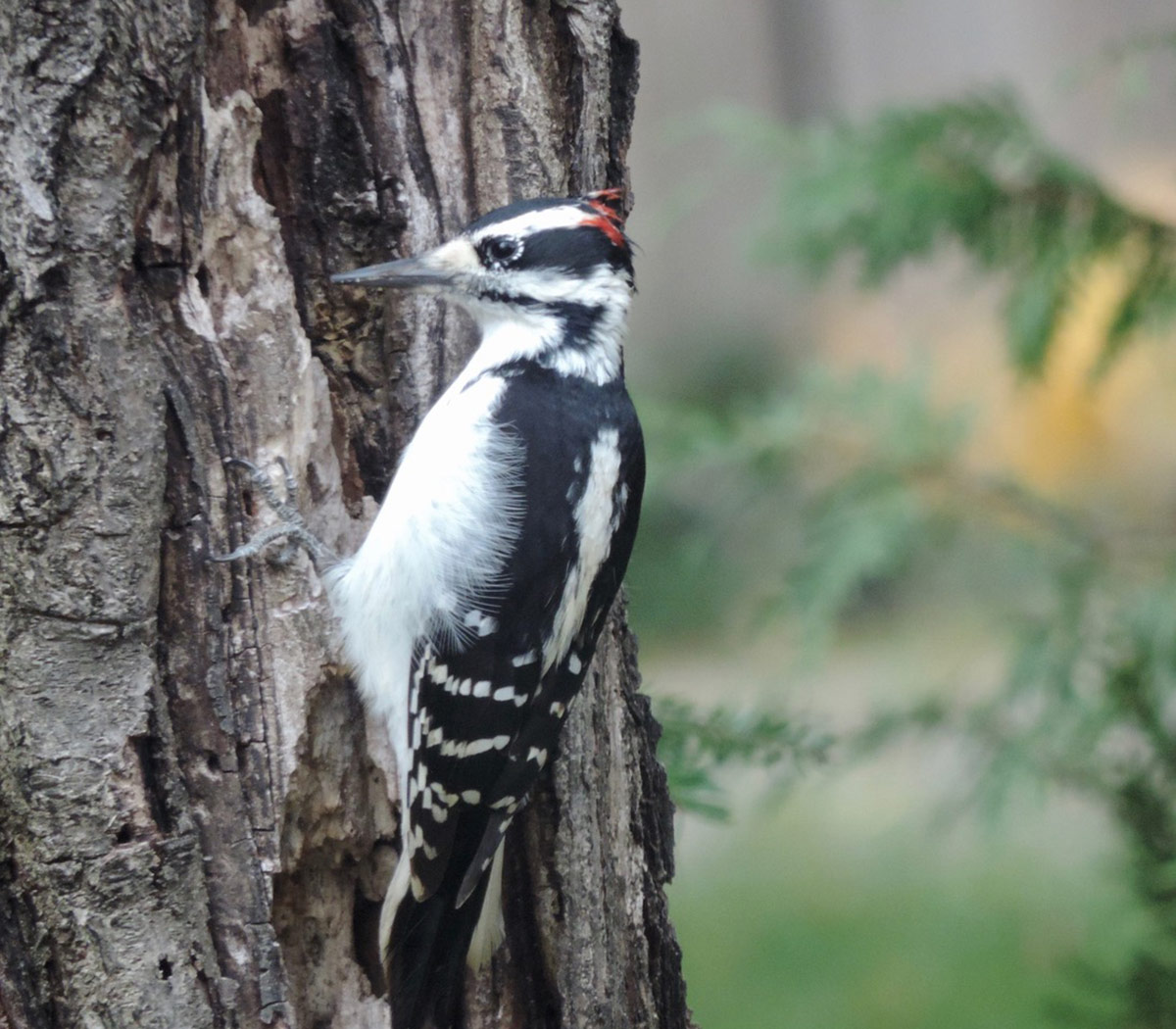 Many birds live in dead trees. Sometimes snags are called ‘cavity trees’ because of holes, often created by the birds themselves. I often see woodpeckers excavating holes in my backyard snag, looking for insects that live in the dead wood.
Many birds live in dead trees. Sometimes snags are called ‘cavity trees’ because of holes, often created by the birds themselves. I often see woodpeckers excavating holes in my backyard snag, looking for insects that live in the dead wood.
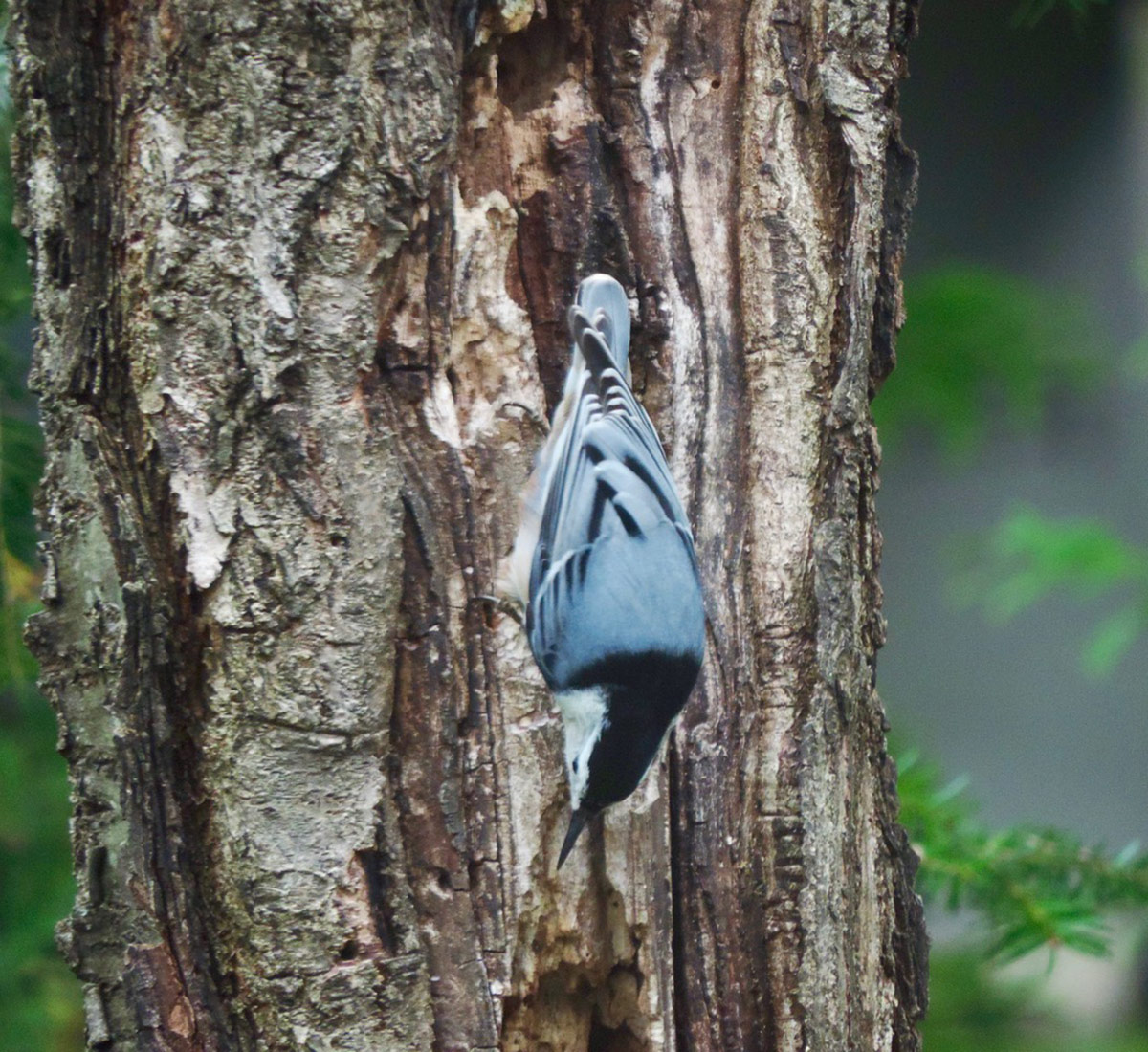 Other birds, such as nuthatches and titmice, rely on these holes to rear their young. They are called ‘secondary cavity nesters’ because they don’t make the holes but are happy to move into these already-created cavities. I love watching the nuthatches, ‘upside down birds’ that go down the snag head-first in search of food. A snag has a virtual smorgasbord of insect life tucked away in its decaying crevices.
Other birds, such as nuthatches and titmice, rely on these holes to rear their young. They are called ‘secondary cavity nesters’ because they don’t make the holes but are happy to move into these already-created cavities. I love watching the nuthatches, ‘upside down birds’ that go down the snag head-first in search of food. A snag has a virtual smorgasbord of insect life tucked away in its decaying crevices.
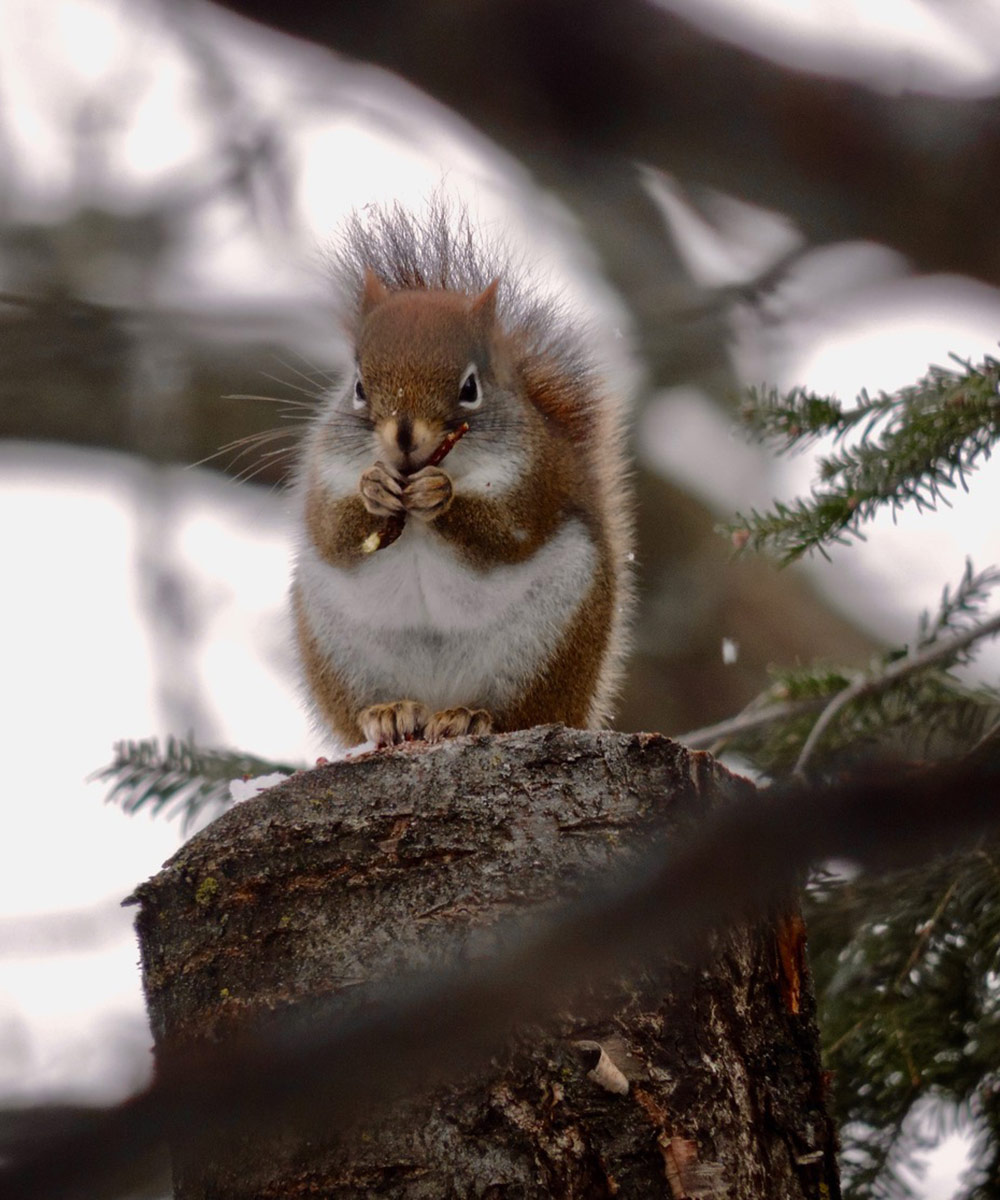 Of course, just like in a forest, other animals find their way to the snag too. In winter, squirrels sometimes perch on its flat cut boughs. Occasionally, I see a hawk or owl fly onto the snag’s bare limbs. Owls like to raise their young in a snag, although no owl has yet to choose my snag as its nesting place.
Of course, just like in a forest, other animals find their way to the snag too. In winter, squirrels sometimes perch on its flat cut boughs. Occasionally, I see a hawk or owl fly onto the snag’s bare limbs. Owls like to raise their young in a snag, although no owl has yet to choose my snag as its nesting place.
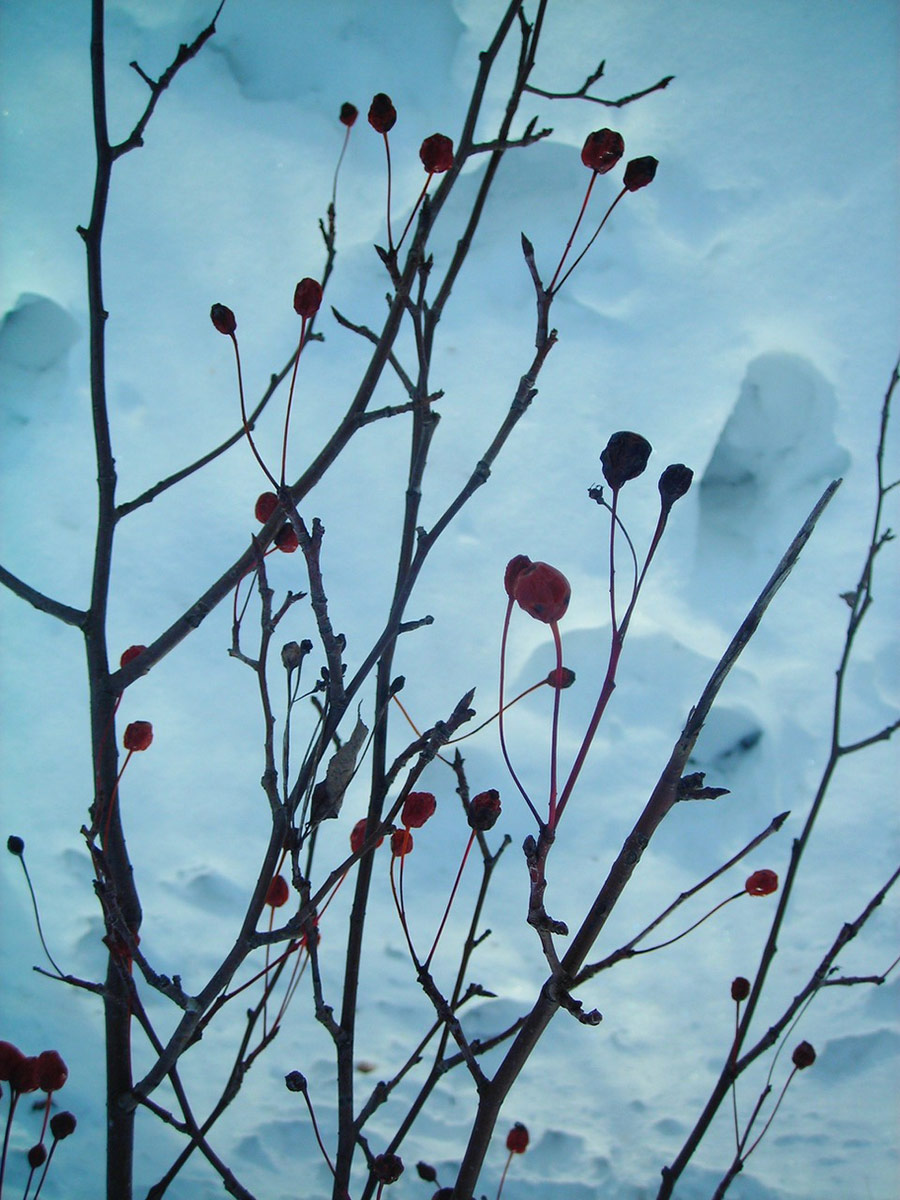 When the arborist cut down the boughs of that dead old cherry tree to make the snag, I also asked if they could leave the logs which I turned into edging for my backyard garden beds. They look very natural. They, too, will attract insects, including beneficial pollinators. Most of the garden is covered in snow now but some of the seedheads are still standing as food for the birds to eat in the winter garden.
When the arborist cut down the boughs of that dead old cherry tree to make the snag, I also asked if they could leave the logs which I turned into edging for my backyard garden beds. They look very natural. They, too, will attract insects, including beneficial pollinators. Most of the garden is covered in snow now but some of the seedheads are still standing as food for the birds to eat in the winter garden.
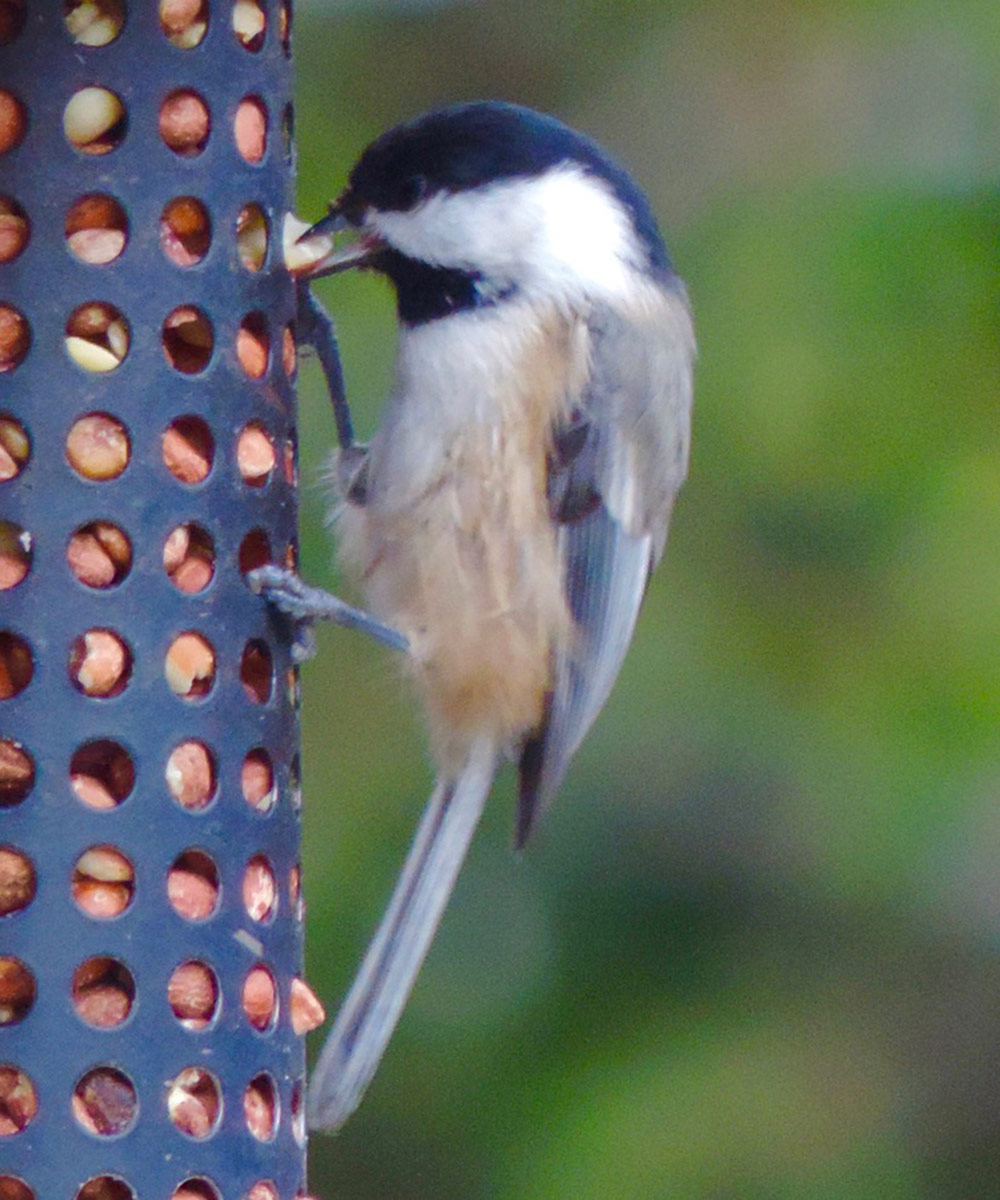 Snags in a city garden help urban wildlife and do not harm, providing they are not too close to utility lines or homes. So many birds visit my backyard, including flocks of chickadees that eat mosquitos and other insects during the summer months. I always welcome them to my garden.
Snags in a city garden help urban wildlife and do not harm, providing they are not too close to utility lines or homes. So many birds visit my backyard, including flocks of chickadees that eat mosquitos and other insects during the summer months. I always welcome them to my garden.
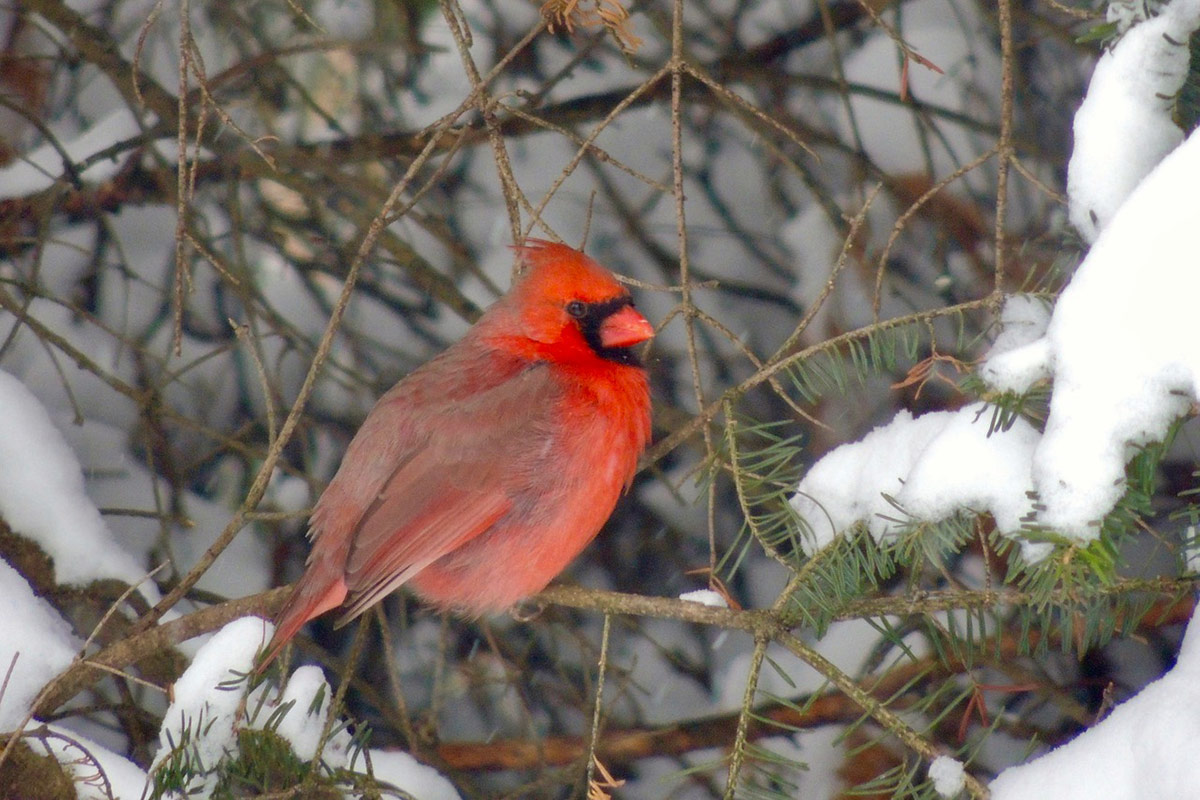 Near the snag, winter birds including bright red male cardinals and their mates find shelter in the old cedar trees. Our bird feeder is positioned nearby. I keep it cleaned and filled with good quality seed, especially during the long winter months.
Near the snag, winter birds including bright red male cardinals and their mates find shelter in the old cedar trees. Our bird feeder is positioned nearby. I keep it cleaned and filled with good quality seed, especially during the long winter months.
Thank you so much for sharing your wildlife-friendly gardening practices, Julianne, and all of these beautiful birds that visit the thriving ecosystem that you support! Your garden is a fabulous example of how you don’t need to make a huge effort to have a huge impact on your environment, particularly in winter when wildlife is most vulnerable.
Have you started observing wildlife in your garden as you get outside to start spring chores? Or have you been documenting the various birds that visited your trees and feeders through the winter? If you’re gardens are a wildlife haven, we’d love to see it! Follow the directions below to submit photos via email, or send me a DM on Instagram: @agirlherdogandtheroad.
Have a garden you’d like to share?
Have photos to share? We’d love to see your garden, a particular collection of plants you love, or a wonderful garden you had the chance to visit!
To submit, send 5-10 photos to [email protected] along with some information about the plants in the pictures and where you took the photos. We’d love to hear where you are located, how long you’ve been gardening, successes you are proud of, failures you learned from, hopes for the future, favorite plants, or funny stories from your garden.
Have a mobile phone? Tag your photos on Facebook, Instagram or Twitter with #FineGardening!
Do you receive the GPOD by email yet? Sign up here.
Fine Gardening Recommended Products
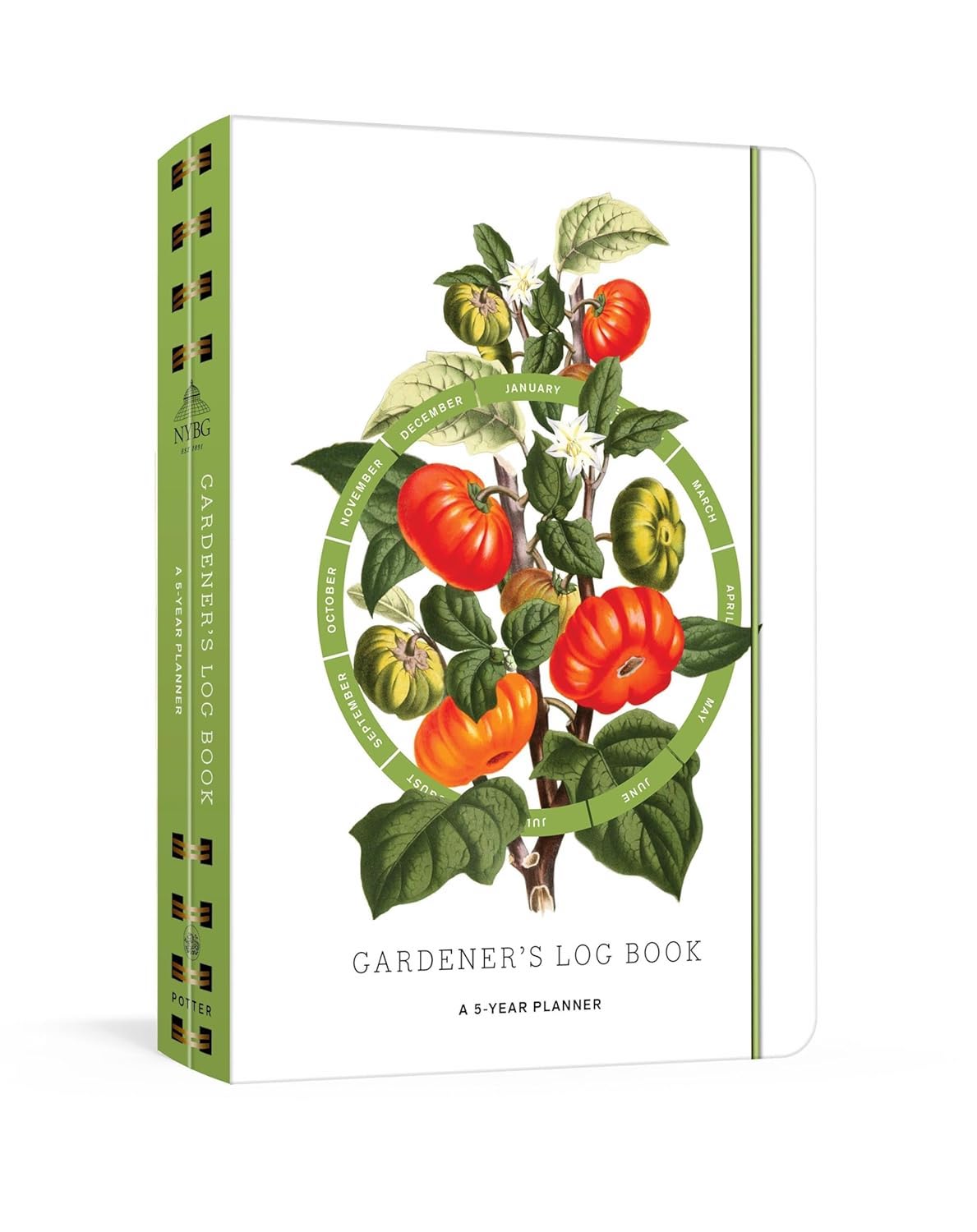
Gardener’s Log Book from NYBG
Fine Gardening receives a commission for items purchased through links on this site, including Amazon Associates and other affiliate advertising programs.
This weatherproof five-year log book includes the following features:
· Sturdy waterproof cover to protect pages from rain and muddy soil
· Lined pages and gridded paper for plotting beds
· Five years of 12-month bloom and harvest grids for recording what you planted and when
· Authoritative appendices on composting, pruning, pest and disease control, and container gardening
· Useful reminders by season on fertilizing, mulching, and transplanting
· Space for listing your favorite sources and suppliers.
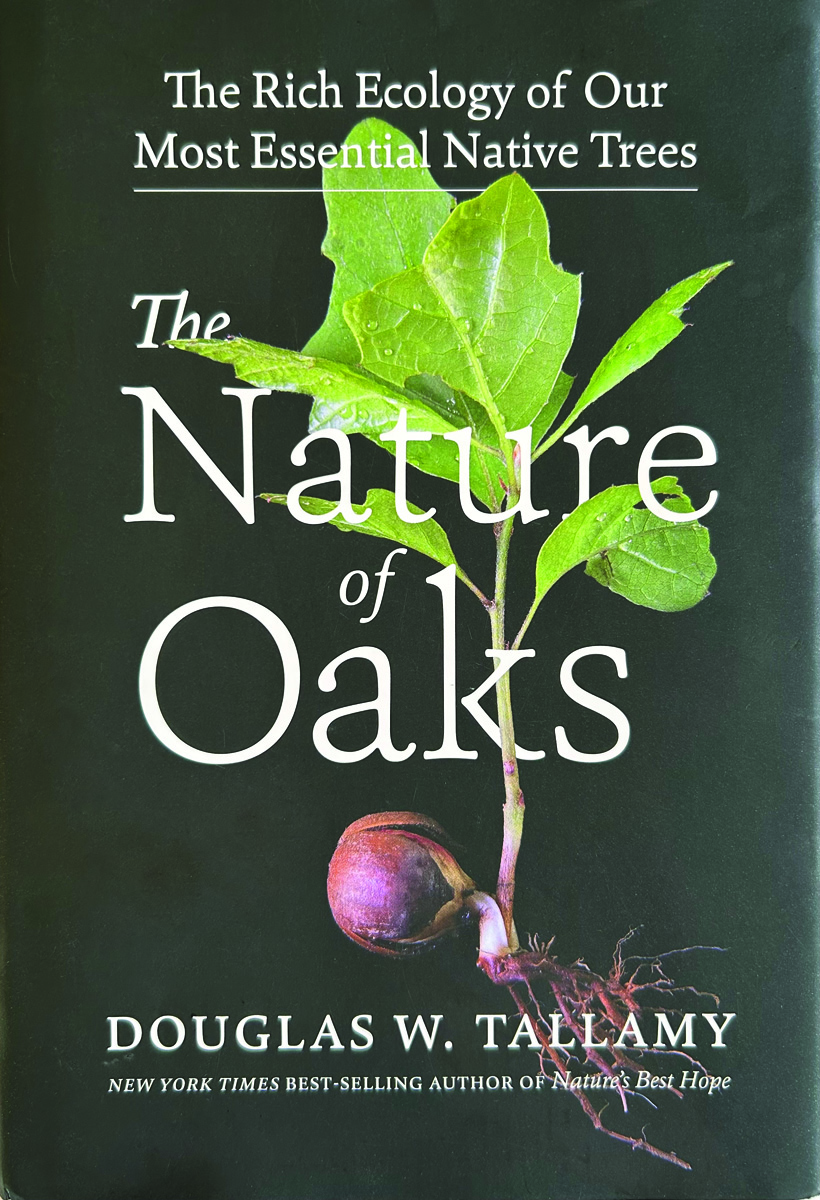
The Nature of Oaks: The Rich Ecology of Our Most Essential Native Trees
Fine Gardening receives a commission for items purchased through links on this site, including Amazon Associates and other affiliate advertising programs.
The Nature of Oaks reveals what is going on in oak trees month by month, highlighting the seasonal cycles of life, death, and renewal. From woodpeckers who collect and store hundreds of acorns for sustenance to the beauty of jewel caterpillars, Doug Tallamy illuminates and celebrates the wonders that occur right in our own backyards. He also shares practical advice about how to plant and care for an oak, along with information about the best oak species for your area.

National Wildlife Federation®: Attracting Birds, Butterflies, and Other Backyard Wildlife, Expanded Second Edition (Creative Homeowner) 17 Projects & Step-by-Step Instructions to Give Back to Nature
Fine Gardening receives a commission for items purchased through links on this site, including Amazon Associates and other affiliate advertising programs.
From the National Wildlife Federation, the largest U.S. nonprofit conservation organization, with 6 million members and 51 state and territorial affiliated organizations. 17 step-by-step projects that everyone can do together make getting your family back to nature easy, educational, and fun. Over 200 color photos of backyard wildlife habitats and the wide variety of creatures they attract, plus step-by-step photos and illustrations for family projects. Learn wildlife-friendly practices for gardening, landscape design, supplemental feeders, birdbaths, nesting places, and more. Learn how to attract backyard pollinators, from bees and butterflies to beetles, bats, and hummingbirds
Get your garden certified by the National Wildlife Federation’s Garden for Wildlife(TM) program by following the included certification application checklist.

